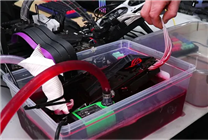Memory Chip Prices Set to Surge: Impact of AI on DRAM and NAND Markets
Summary:
- Micron and Samsung are poised to increase memory product prices, driven by rising demand for AI technologies.
- DRAM prices are expected to rise between 15% and 30%, with NAND price hikes of 5% to 10%.
- The shift in production focus from DDR4 to DDR5 and HBM is creating tighter market conditions, particularly impacting DDR4 availability.
In a significant market development, leading memory manufacturers Micron and Samsung have announced plans to increase the prices of their memory products in the upcoming quarter. Following Micron’s announcement of a projected price hike of 20% to 30% on DDR4 and DDR5 memory products, Samsung has also indicated plans for similar increases, expected to range between 15% and 30% for the fourth quarter of this year.
Sources confirm that Samsung has officially notified its key customers regarding the impending price adjustments for various DRAM protocols, including LPDDR4X and LPDDR5/5X. The anticipated increase reflects a broader trend in memory markets, driven by a confluence of supply constraints and surging demand for cutting-edge technology applications.
Demand-Driven Price Increases
The robust demand for memory chips is primarily linked to the rapid advancement of artificial intelligence applications. As AI technologies evolve—extending from initial training phases to inference operations and deployment on edge devices—demand for high-capacity DRAM and NAND Flash storage continues to soar. This escalating consumption has resulted in tighter supply conditions, exerting upward pressure on prices.
Notably, major market players such as Samsung, SK Hynix, and Micron have strategically redirected their production capabilities towards DDR5 and High Bandwidth Memory (HBM), while gradually phasing out manufacturing of DDR4 products. This shift is noteworthy, as market demands for DDR4 continue to persist, compelling prices to rise despite a reduction in overall production capacity.
NAND Storage Products Facing Similar Trends
In addition to the developments in DRAM pricing, NAND storage products are also set to become more expensive. The price of NAND-type eMMC (embedded MultiMediaCard) and UFS (Universal Flash Storage) products is projected to increase by approximately 5% to 10% in the near term. This trend is further fueled by the growing demand for cloud-based services and edge AI technologies.
Currently, delivery timelines for large-capacity Hard Disk Drives (HDDs) are extending considerably, with estimated lead times approaching one year. The extended delivery schedules indicate a heightened demand for robust storage solutions, underscoring the increasingly critical role that memory and storage products play in modern technological ecosystems.
The Future of DDR4 Pricing
As manufacturers wind down production of DDR4-related products, projections suggest that by 2026, production capacity for these older technologies could dwindle to a mere 20% of what it was in 2025. This significant decrease poses challenges for consumers and industries reliant on DDR4 technology, particularly as they navigate the necessary transition to newer memory formats.
The ongoing adjustments in memory pricing and production strategies underscore a pivotal moment in the semiconductor industry, with implications for hardware manufacturers, data centers, and enterprises across various sectors. Stakeholders will need to stay abreast of these developments to adapt their procurement strategies accordingly.
Conclusion
The anticipated increases in memory chip prices, driven largely by the requirements of advanced AI applications and changing production priorities, will have ripple effects throughout the tech industry. As heavyweights like Samsung and Micron navigate this evolving landscape, the shift in focus from older DDR4 technologies to more advanced solutions like DDR5 will reshape the memory market.
For those invested in memory technologies, understanding these trends is essential for forecasting future costs and ensuring competitiveness in a landscape characterized by rapid technological evolution and heightened consumer demand. As we look to the future, staying informed will be key to leveraging opportunities in this dynamic market space.







